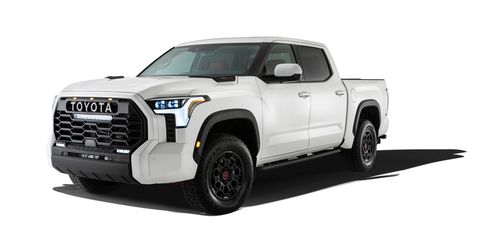The Evolution of the Side-View Mirror

From the April 2022 issue of Car and Driver.
As cars get larger and more complex, so do their components. Consider the humble side-view mirror, once an optional add-on, now a safe-folding, lane-watching, self-defogging marvel of technology. And like the vehicles it’s attached to, it’s much bigger than when it began.
Car companies didn’t originally offer mirrors on production cars. Why would you need them on single-track and two-lane roads? Racing driver Ray Harroun is credited with the first rear-view mirror, which he attached to the cowl of his Marmon Wasp before the first running of the Indy 500 in 1911. He won. Engineer Elmer Berger applied for a patent on the “Cop-Spotter” door mirror in 1921. Mirrors as optional add-ons became more popular after the Federal Highway Act in 1956, which led to the multi-lane highways we know and love.
The National Traffic and Motor Vehicle Safety Act of 1966 addressed safety standards, including rear visibility, and although it did not specifically require mirrors, they started to become standard equipment in the mid-to-late ‘1960s.
Federal regulations today require a rear-view and driver’s side mirror, and a passenger mirror if the inside mirror does not meet specific field-of-view requirements. State regulations vary but most agree side mirrors are only required if the center mirror is obstructed. All agree that objects in mirror are closer than they appear.
Toyota
1965 Toyota Stout
The Stout was the first Toyota truck sold in the U.S., but it didn’t exactly corner the pickup market. In its first year in the states, 1964, Toyota sold four. Tracking down mirrors for the Stout is a restoration challenge since it wore RHD fender-mounted units in its native Japan, and came to the States before federal requirements for side-mirrors went into place.
Part Number: 87910-35901
Dimensions: 4.0 x 4.4 x 6.0 in
Mirror Area: 92
Weight: 0.7 lb
Features: Well, it swivels
Cost: $248, on eBay

Toyota
2022 Toyota Tundra
The Tundra was Toyota’s first full-size truck in the states, introduced in 1999, and it was sized fuller in 2007—our initial review wondered at that point if it was too big. Little did we know it wasn’t done growing. The 2022 Tundra TRD Pro is 233.6 inches long, and 81.6 inches wide. That’s 1.7 inches wider than it was in 2007. No wonder it needs such big mirrors.
Part Number: 87940-OC690
Dimensions: 7.0 x 18.0 x 8.3 in
Mirror Area: 29 in3
Weight: 7.2 lb
Features: Power adjustment, memory positioning, side-view camera, defrost (body-color cap sold separately)
Cost: $1613
This content is created and maintained by a third party, and imported onto this page to help users provide their email addresses. You may be able to find more information about this and similar content at piano.io




